Introduction
Western media never stop warning us of China: it menaces Taiwan, threatens its neighbors and shipping lanes in the South China Sea, and sticks military bases on Cuba. China, we are told, spies on us by the most devious means, through TikTok, Huawei 5G, and weather balloons. And China, say our media, ensnares Africa with debt traps. Meanwhile, the US government and its media-echo decry China’s abuses of its own people. China, the US says, has committed “cultural” and literal genocide against Uyghur muslims in Xinjiang. As for the Covid-19 pandemic, the West with whiplash-inducing self-contradiction accuses China of mishandling the crisis by imposing both draconian lockdowns and lockdowns that were too lax, as well as premature reopenings and reopenings that were too-long delayed.
Meanwhile, the liberal and left-liberal West shakes its ideological finger at China, declaring it to practice an idiosyncratic communism-capitalism that sometimes features the worst of both worlds.
In the western imagination, China’s citizens are feared for their abject discipline and uncanny competence. Yet the West pities them too, thinking they are ruled by communist overlords in a dictatorship devoid of individual liberties.
In short, to the western world, China is an iconic picture of tyranny, malevolence, and exploitation. Still, China is not unique in its status as a US bogeyman. Whenever the West targets a country militarily or economically, the press always turns the country into a cartoon, invariably the same cartoon: authoritarian, autocratic, led by an evil/mad dictator; e.g., Cuba, Iran, Nicaragua, Russia, Syria, Venezuela, etc.
 Which is why we should be grateful for the picture of China drawn in this elegantly concise and easily read book, The East Is Still Red: Chinese Socialism in the 21st Century, by Carlos Martinez (Praxis Press, 2023, 210 pp.). Of its 210 pages, nearly 60 are taken up with source citations, a 5-page index, reading recommendations, and photographs.
Which is why we should be grateful for the picture of China drawn in this elegantly concise and easily read book, The East Is Still Red: Chinese Socialism in the 21st Century, by Carlos Martinez (Praxis Press, 2023, 210 pp.). Of its 210 pages, nearly 60 are taken up with source citations, a 5-page index, reading recommendations, and photographs.
Despite its brevity, the book expertly refutes the West’s blizzard of charges against China. It also sketches China’s 20th century history, its economics and political system, and the ideology that accompanied the Chinese people’s astonishing advance. Martinez analyzes and answers two questions preoccupying many on the political left: Is China socialist? Is it imperialist? (Martinez argues Yes, and No, respectively.)
Life in China Today
First, some bullet points on life in China today, with facts gleaned from the book. (Citations are to the print edition.)
• Life expectancy in China is now 78.2 years and literacy is 97%. For comparison, in the US the figures are 76.4 and 79, respectively. (95)
• Infant mortality is 5.4/1000 in 2020, just under the US figure of 5.69/1000. (95)
• The majority of students in higher education are women, while before the 1949 revolution the vast majority of women received no education at all. (31)
• Since 2000 China has revived universal health insurance, a minimum 9-year free compulsory education, pensions, subsidized housing, and other income support. (67-68)
• 98% of poor villages have optical fiber communications and 4G technology. (99)
• Extreme or “absolute” poverty has been eliminated. (31) This meant lifting over 800 million people (now 10% of humanity) out of poverty in the last 40 years. (89) However, to say that China has eliminated “absolute poverty” but not “poverty” is technically true but vastly understates the accomplishment. China’s poverty elimination program considers that each and every citizen must have adequate food and clothing, access to medical services, safe housing with drinking water and electricity, and at least nine years of free education. To do this, “Three million carefully selected cadres were dispatched to poor villages, forming 255,000 teams that reside there. Living in humble conditions for generally one to three years at a time, the teams worked alongside poor peasants, local officials, and volunteers, until each household was lifted out of poverty.” (97)
• China’s response to public health emergencies was very recently tested. After Covid-19 emerged in Wuhan, China identified and suppressed the virus, sequenced and published the genome, and reopened after a few months. This rapid response was unprecedented, as noted by the World Health Organization and many other authoritative bodies. China literally saved millions of lives through its public health administrative virtuosity, while the West, on the other hand, sacrificed millions. (At the time, this reviewer wrote about China’s initial response to COVID-19, here.) (113)
• China’s per capita incarceration rate is less than 20% that of the US. (122)
• 93% of China’s population are satisfied with their central government, according to a study by the Kennedy School of Government at Harvard University. (54)
To see how impressive this all is, consider that by global standards China is anything but a rich country. According to the World Bank, in 2022 China’s nominal GDP per capita was about one-sixth of that of the US, but its purchase-price-parity GDP per capita is now comparable to that of the US. This is consistent with China’s status as a peripheral or semi-peripheral country in the global system, sending most of the surplus value it produces to the global north. But it also tells us that China has created a domestic market that provides a much higher national standard of living than that in many other peripheral and semi-peripheral countries.
History
Martinez’s summary of China’s recent history explains that the current quality of life and popular sovereignty in China are rooted in the first half of the 20th century.
In 1949, year of the revolution, China was among the poorest countries in the world. The US under President Truman then imposed a near total blockade on China. (94) This crushing, existential impediment to China’s development, eventually forced it into the 1979-1980 US-China agreements with the US under President Nixon. China then devised the economic strategy that it now calls “socialism with Chinese characteristics.”
But China’s progress did not begin with the US-China deal and the economic changes of the late 1970s-80s known as “Reform and Opening Up.” From the revolution in 1949 until the death of Mao Zedong in 1976, life expectancy in China rose 31 years, the fastest ever recorded in a major country. In the same period, literacy went from 20% to 93%. (17) China’s unprecedented triumph over poverty simply continued the practice that began before the 1949 revolution, in the Communist-liberated zones, beginning with the Jianxi-Fujian Soviet in 1931. (90) After the 1949 revolution, life expectancy rose from 36 to 67 in the three decades that followed, well-exceeding the global increase. (91-92) Even the World Bank praised China’s successful development over the four decades before 1983. (90)
Development Strategy
China’s economic changes of the later 20th century were not just a development strategy, but a strategy of coping with the existential threat presented by the West. China intended to integrate itself into the global production chain so thoroughly that it would make the cost of Western aggression against it too high. (36-37, 47)
China’s economic system now depends on its popular government’s control of the commanding heights of the economy, including banking and all the leading industries, avoiding the scourge of privatization that led to the collapse of the Soviet Union and the devastation of its people in the 1990s. In China, even land ownership has not been privatized in the western sense.
Notice that this development strategy abjured the development strategy of the Western bloc, which depends, in the first instance, on centuries of colonialism, imperialism, plunder, and in the second, on the continuing imposition on the Global South of dependent underdevelopment, unequal exchange, violence, coups, sanctions and other malign practices required to enforce the unequal international order.
Global Leadership in Tech, Science, Climate Mitigation
China’s success is not just in its internal development, but in its global leadership. When the US trumpets its own “global leadership,” it looks nothing like what most of us would like the phrase to mean. China, on the other hand, really does lead, not only in world poverty reduction but in technology, scientific research, and climate mitigation efforts.
Some more bullet points, with facts gleaned from the book.
• China leads the world in renewable energy, digital networking, quantum computing, space exploration and nanotechnology. (xv)
• China leads the world in scientific research publication and patent grants. (xv)
• In 2007 over 80% of China’s electricity came from coal. By 2022, this dropped to 56%, about the same as Australia, a country with a per capita GDP (nominal) about five times China’s. (139)
• In 2021, China accounted for 46% of the world’s new solar and wind power capacity. (140)
• International energy analyst Tim Buckley observed that China is the world leader in “wind and solar installation, in wind and solar manufacturing, in electric vehicle production, in batteries, in hydro, in nuclear, in ground heat pumps, in grid transmission and distribution, and in green hydrogen… they literally lead the world in every zero-emissions technology today.” (140)
• China is reforesting, planting forests the size of Ireland in a single year, and doubling forest coverage from 12% in 1980 to 23% in 2020, while the global trend is in the opposite direction. (144-145)
• China also is leading in green foreign direct investment through the Belt and Road Initiative, in Pakistan, Argentina, Zambia, Ethiopia, Kenya, Central African Republic. (149-150)
Imperialism? Debt Traps? ‘Belt and Road’ Bad?
The book offers a detailed analysis of the charge that China is imperialist. For example, as theorized by Lenin, one central imperial criterion is the export of capital. Martinez writes that in the past, “China’s ‘export of capital’ was limited largely to foreign aid projects in Africa, most famously the Tazara Railway linking Tanzania and Zambia, which aside from enabling regional development, broke Zambia’s dependency on apartheid-ruled territories (Rhodesia [now Zimbabwe], South Africa, Mozambique).”
Nor could China be considered imperialist in the 1980s and 1990s: “[R]ather, it was the recipient of enormous volumes of foreign capital, from Japan, Taiwan, Hong Kong, the US and Europe… China opened itself up to exploitation by the imperialist powers so as to develop technological capacity and insert itself into global value chains.” (36-37)
The charge of imperialism overlaps the charge that China ensnares African states in “debt traps.” This is ironic, given that the charge is made by Africa’s historical trapper-in-chief, the West.
Martinez dispenses with this claim too. He describes the economic relations between Africa and China and how little they resemble imperialist relations.
[T]he structure of the Chinese economy is such that it doesn’t impel the domination of foreign markets, territories, resources and labor in the same way as free market capitalism does. The major banks—which obviously wield a decisive influence over how capital is deployed—are majority-owned by the state, responsible primarily not to shareholders but to the Chinese people,” as are “the key industries,” which are “subjected to heavy regulation by a state that does not have private profit maximization as its primary objective. (38)
Greek economist and politician Yanis Varoufakis notes, “the Chinese are non-interventionist in a way that Westerners have never managed to fathom… they went to Addis Ababa and said to the government, ‘we can see you have some problems with your infrastructure, we would like to build some new airports, upgrade your railway system, create a telephone system, and rebuild your roads.’” (42)
China is now Africa’s largest trading partner: $254 billion in 2021. Compare US-Africa trade, at $64 billion. In addition to trade, China “provides vast low-cost loans for infrastructure projects, with Chinese banks now accounting for around a fifth of all lending to Africa.” Due in part to Chinese finance and expertise, ‘Ethiopia in 2015 celebrated the opening of the first metro train system in sub-Saharan Africa, along with Africa’s first fully electrified cross-border railway line, the Ethiopian-Djibouti electric railway. The African Union headquarters in Addis Ababa was funded by the Chinese government as a gift to the AU.’” China is also building Zimbabwe’s parliament building gratis, and funding construction of Africa’s CDC, just opened in January 2023. (40)
China makes loans differently too. At the time of the book’s writing, the average interest rate on private sector loans was about 5%, but Chinese public and private lenders charged half that. Austerity is never a condition of a Chinese loan, unlike Western loans that are made under IMF and World Bank strictures. (41)
China’s policy on foreign investment and loans is not an accident. China follows explicit rules for African investment, as outlined by President Xi in 2018: “No interference in African countries’ internal affairs; no imposition of our will on African countries; no attachment of political strings to assistance to Africa; and no seeking of selfish political gains in investment and financing cooperation with Africa.” (43-44)
China initiated its famous “Belt and Road Initiative (BRI),” a global infrastructure development strategy, ten years ago. As of last year, 150 countries (the United Nations General Assembly has 193) have signed up with BRI. “Politically, the project fits into China’s longstanding approach of using economic integration to increase the cost (and thereby reduce the likelihood) of confrontation.” (47) “Nearly every country in the Global South has signed up” with BRI, “including 43 out of 46 countries in sub-Saharan Africa.” (48)
Martinez quips, “Surely not all the turkeys are voting for Christmas?” (48)
Xinjiang
Perhaps the most vicious tale the West tells about China concerns Xinjiang and its Uyghur population. The US government and its media echo, joined by other western governments, accuse China of physical, cultural and religious genocide of Uyghurs, imprisoning a million of them, and subjecting them to forced labor.
Martinez debunks the Xinjiang myth point by point. But for this review, lets skip the details of China’s policy and practices in Xinjiang (largely a social work approach to terrorism). Let’s also forget the singular and bizarre source of the Xinjiang tales, one Adrian Zenz, exposed by a number of articles from The Grayzone. (120-122) Even without all that, the fraud is revealed by circumstantial evidence alone, as these bullet points show.
• Between 2010 and 2018 the Uyghur population has increased by 25%, from 10.2 million to 12.7 million; in the same period the majority Han Chinese population increased by only 2%. (117)
• China’s one-child policy implemented in 1978 and ending in 2015 exempted China’s dozens of ethnic minorities, including Uyghurs. (117)
• Life expectancy in the region has increased from 30 years in 1949 to 75 years today. (117)
• No refugee crisis exists or has been reported along the border with Pakistan, Kazakhstan or elsewhere. Indeed, Time magazine reported in 2021 the US had not admitted a single Uyghur refugee in the previous 12 months. (117)
• The total number of deaths caused by Covid-19 in Xinjiang is three. (118)
• All the schools in Xinjiang teach in both Standard Chinese and one minority language, most often Uyghur. (118)
• Chinese banknotes have five languages: Chinese, Tibetan, Uyghur, Mongolian, and Zhuang. (118-9)
• There are over 25,000 mosques in Xinjiang, three times the number there were in 1980 and one of the highest rates per capita in the world. (119)
• The Xinjiang Islamic Institute is headquartered in Xinjiang’s capital Urumqi. Thousands of students attend Islamic schools and the religion is practiced freely. (119)
• “During the 50th session of the Human Rights Council in 2022, members of the Organization of Islamic Cooperation overwhelmingly co-sponsored the statement supporting China’s position (by 37 to 1).” Elsewhere in the Global South results were similar: Africa (33 to 2); Asia (20 to 2). (119)
In short, the Xinjiang story perpetrated by the West exemplifies the “big lie,” as theorized by an astute Adolf Hitler in Mein Kampf:
[I]n the big lie there is always a certain force of credibility; because the broad masses of a nation are always more easily corrupted in the deeper strata of their emotional nature than consciously or voluntarily; and thus in the primitive simplicity of their minds they more readily fall victims to the big lie than the small lie, since they themselves often tell small lies in little matters but would be ashamed to resort to large-scale falsehoods. It would never come into their heads to fabricate colossal untruths, and they would not believe that others could have the impudence to distort the truth so infamously.
Speaking of Hitler, an iconic offense in modern thought and discourse is the factual denial of the Nazi Holocaust. We might register the same disgust for the factual denial of any historically established mass genocidal event (e.g., in Guatemala). Is there any reason not to treat the wilful fabrication of a non-existent genocide with the same revulsion?
The South China Sea
The West accuses China of trying to militarize the South China Sea, including through island-building.
Martinez cites China scholar Jude Woodward: “Woodward observed that China’s island-building was carried out largely in response to the actions taken by other states in the region: ‘In its actions on these disputed islands, China can with justice argue that it has done no more than others… It [is] rarely mentioned that Taiwan has long had an airstrip on Taiping, Malaysia on Swallow Reef, Vietnam on Spratly Island and the Phillipines on Thitu.’” (50)
Moreover, China’s presence in the South China Sea is for economic and military securtity. It is China’s major shipping route, “as central to Asia as the Mediterranean is to Europe,” writes Robert Kaplan. (50) A blockade by the US or other hostile powers would present an existential threat. (50) This is not an imaginary threat, given US naval provocations and exercises in the South China Sea and the Taiwan Strait, and US military and diplomatic relations with China’s separately-governed province of Taiwan. Indeed, it is the US which has sought to militarize and control the region.
Conclusion: The US Menace
The book’s last chapter urges us to work to oppose the West’s new Cold War on China. This war is multifaceted, including the 2012 US “pivot to Asia,” the banning of TikTok and WeChat, the kidnapping of Huawei CFO Meng Wanzhou, the long-standing US encirclement of China and Russia with perhaps half of its 800 to 1100 overseas military bases, and US military aggression in the Taiwan Strait and South China Sea. (167)
US policy is explicit: “Our first objective is to prevent the reemergence of a new rival…that poses a threat on the order of that posed formerly by the Soviet Union… Our strategy must now refocus on precluding the emergence of any potential future global competitor.” (US Defense Planning Guidance for 1994-1999) (169)
Again citing China expert Jude Woodward, author of The US vs China: Asia’s new Cold War? (Manchester University Press, 2017), Martinez observes that current US policy toward China shows “a chilling resemblance” to US-USSR relations at the height of the Cold War, when the US sought to isolate the USSR economically, politically, and militarily. (170) Quoting Woodward, “The USSR was variously surrounded by a tightening iron noose of US military alliances, forward bases, border interventions, cruise missiles and naval exercises. Economically it was shut out of international trade organizations, subjected to bans and boycotts and excluded from collaboration on scientific and technological developments. It was diplomatically isolated, excluded from the G7 group of major economies and awarded an international pariah status. It was designated as uniquely undemocratic. Any opponents of this ‘Cold War’ and accompanying nuclear arms race were stigmatized as disloyal apologists, closet ‘reds’ or spies and subjected to McCarthyite witch-hunts.” (170)
“Propaganda wars can also be war propaganda,” writes Martinez. (110) And so it is with western demonization of China.
For those of us overwhelmed and frightened by the West’s prolific fictions about China and who wish to share a more accurate picture of the country with friends, families and fellow activists, in the hope of stopping the war before it starts, we might give them this book.
END NOTES
This post was originally published on Dissident Voice.











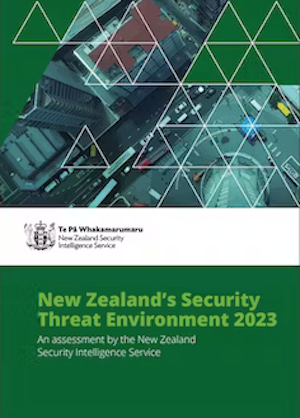

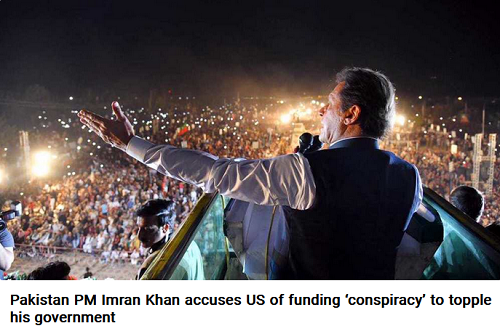
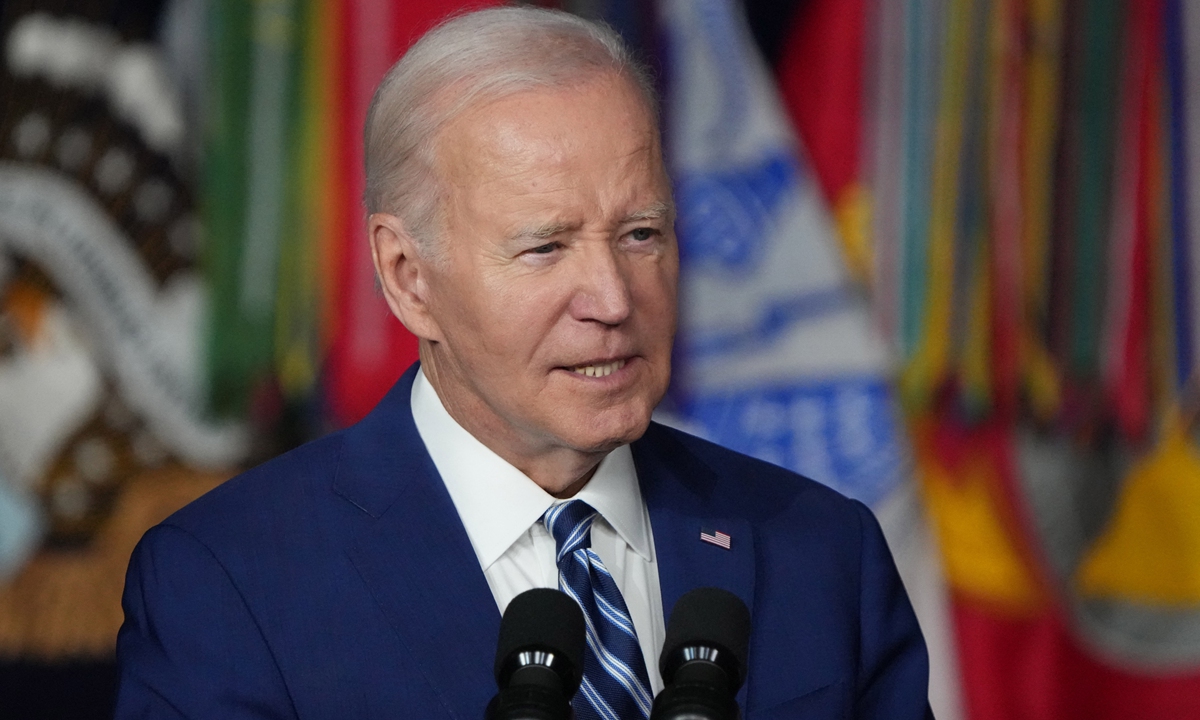




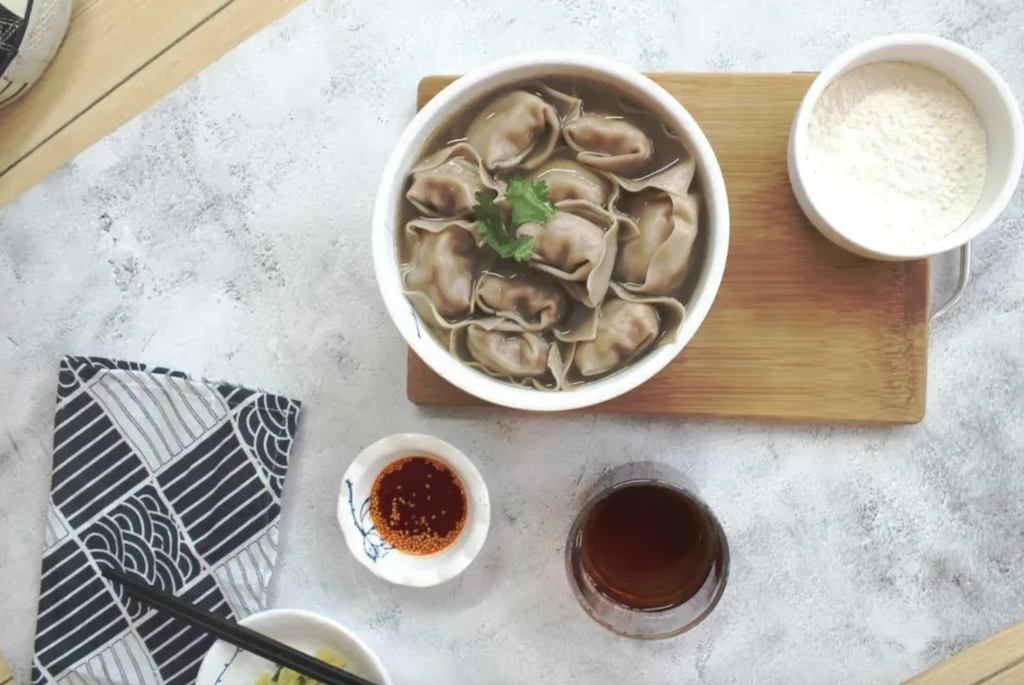

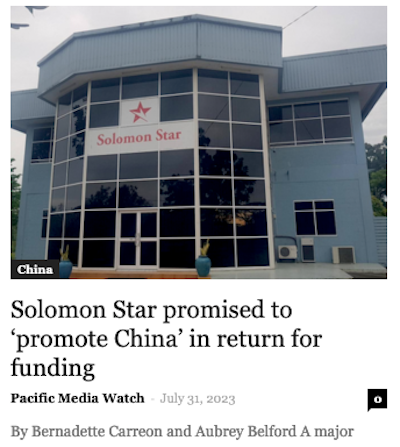
!["Solomon Star condemns [unrelated] attack by US-funded OCCRP"](https://asiapacificreport.nz/wp-content/uploads/2023/08/Solomon-Star-edit-1Aug23-680wide.png)


